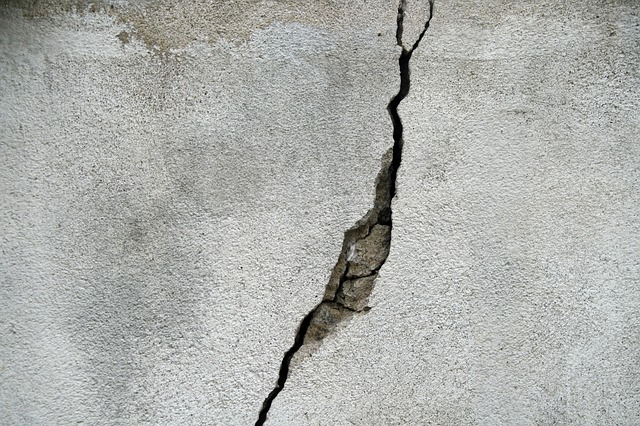Most Frequently Asked Civil Engineering Interview Questions

 Frequently Asked Civil Engineering Interview Questions
Frequently Asked Civil Engineering Interview Questions
Role of a Civil Engineer
What are the duties and responsibilities of civil site engineer in road and building construction?
While in duty of supervision of building, you should ensure that the concrete mixing is according to the grade specified. While supervision of road, you should ensure that the different layers of the road are laid in proper thickness.
Civil site engineer. Is responsible for execution of all construction activity allowed to him & he should take responsibility towards all scope of work under him. He should carryout work allowed to him.
There are two types of site civil engineer , first job is a supervisory one if he works with the consultant, in this case he needs to make sure that the document in hand is the correct designed.
What is responsibility of civil foreman ?
A Civil foremen duties/responsibilities is inspect on sides and management of each work on side and labor work, work quality also record of all work and each labor man & control work on time,on side accident, machines,material,tools. etc are full responsibility a side foremen.
General Questions
What is cement?
Cement is a binding material, which when mixed with water makes it capable of binding stones, bricks, sand, etc through a process called hydration.
What is the method of calculation for require cement qty. In 1 cum brick work with csm 1:6.
1 cum brickwork done to need 35% dry cement mortar.
So, Cement Mortar for 1 cum=1 —0.35=0.35 cum
Given, Ratio is 1:6 = 1+6 = 7
1. Cement= (0.35—1)/7=0.05 cum.
2. Sand= (0.35—6)/7=0.3 cum
What is shuttering? How it is done on site?
Shuttering is Temporary Structure. This Structure used for Placing of Permanent Structure according to Approved Drawing and Design. This structure generally Wooden or Steel.
How to differentiate the volumes of wet and dry sand / soil?
It should find out by Rapid moisture meter ,method moisture correction method.In Wet sand moisture become more and it dry moisture become less then wet.In sand moisture should be allowing only 12 %. 25% of Volume will be differ from the both.
How to increase bearing capacity of soil?
To improve the bearing capacity of soil, one of the following methods can be used.
1. Vibro Floatation Technique
2. Replace the existing soil with road base materials and compact in layers to attain the required bearing capacity of soil.
3. Replace the existing soil with cement mix soil and compact in layers with water to attain the required bearing capacity.
A method for increasing the bearing capacity of foundation soils for built structures consisting of providing a plurality of holes spaced from each other deep in the soil, and injecting into the soil.
Which is more efficient – rectangular beam or a circular beam? Give example?
According to material of beam if we use concrete then rectangular beam but on using steel beam tubular section are better than rectangular.
What is fineness of cement?
Fineness of cement is property of cement that indicate particle size of cement and specific surface area. and indirectly effect heat of hydration. if fineness is more then heat of hydration should be more.
To calculate fineness of cement sieving are done sieve number 9 and size of sieve 90 micron sieve
Structural engineering
What is the difference between deflection and deformation? Explain
Deflection is the degree to which a structural element is displaced under a load
Deflection exists due to compressive load & deformation due to tensile & compression.
We get excavation level readings more accurate with total station, say yes or no ( and give reason)
No. Because Total Station readings are depending with reflection of rays from Total station to prism/target and back to total station which can be affected by Temperature changes etc.
What is the vdf?
In flooring construction point of view VDF is The Vacuum De watered (VD) Flooring. It is a system for laying high quality concrete floors with superior cost-effectiveness.It is used in industrial structures.
RCC – required binding wire
(for 1.0mt steel), nails & lubricant (for 1.0 sqm shuttering) in RCC what are the required quantities for: 1. Binding wire required for 1.000 mt of TMT reinforcement bars. 2. Nails for 1.00 sqm shuttering. 3. Lubricant/black oil/ diesel/ grease for 1.00 sqm shuttering.
For 1: 10 k gs binding wire per 1MT of steel.
For 2: 1 to 1.5 kg per quintal
i.e 10 to 15 k gs per tonne depending upon dia of steel.
For 2= 5 kg , 3= 11.63 , & 4=16.66 gm.
How much of the strength of concrete comes from post-production curing?
After 28 days 99% of strength is gain
1day-16%,3-day-40%,7-day=65%,21day=90%28day=99% and 100%strength achieves only after 28 days and we need to check for target mean strength which is necessary.
What is the minimum length of the wall after which expansion joint is to be provided?
According to IS For RCC strs-45m
Load bearing brick strs-30m
Boundary wall-10m
Overhanging members or facia etc-6m
What is the method of calculate the requirement steel quantity in 1 cum RCC.
For slabs and beams steel should be 80 Kg./Cu.M. and for columns it should be 120 Kg./Cu.M.
What is the process of executing DMC piling?
DMC- direct mud circulation Bentonite is pumped in to the bore at the time of drilling so as to stabilize the sides of the bore hole. Water is also pumped in.As the drilling proceeds..
RCC – column, slab, beams and cover
Explain what are column, slab, beams and cover?
Footing:50mm
column:40mm
beam:25mm
slab:20mm
Column – 40 mm on longer dimension; 25mm on shorter dimension;
Slab – 25mm maximum in case of residential or commercial buildings; 40mm in case of deck slab in flyover or grade separator which has a higher depth of 600mm. Beams – 25mm on all sides.
Generally rate excavation with blasting is more than that with chiseling…Say yes or no and give reason
Yes. but generally in city area or near habitat places blasting prohibited.
There are many restriction on store & procurement of gelatine.
That’s why people consider chiseling method.
Surveying
What is mean by least count? Tell the least count of dumpy level and theodolite?
For theodolite it is 20 and the dumpy level that is 5mm.
Bridge Design
What are the steps involved in the concreting process, explain?
The major steps involved in the process of concreting are as follows:
1. Batching
2. Mixing
3. Transporting and placing of concrete
4. Compacting.
> Batching: The process of measurement of the different materials for the making of concrete is known as batching. batching is usually done in two ways: volume batching and weight batching. In case of volume batching the measurement is done in the form of volume whereas in the case of weight batching it is done by the weight.
> Mixing: In order to create good concrete the mixing of the materials should be first done in dry condition and after it wet condition. The two general methods of mixing are: hand mixing and machine mixing.
> Transportation and placing of concrete: Once the concrete mixture is created it must be transported to its final location. The concrete is placed on form works and should always be dropped on its final location as closely as possible.
> Compaction of concrete: When concrete is placed it can have air bubbles entrapped in it which can lead to the reduction of the strength by 30%. In order to reduce the air bubbles the process of compaction is performed. Compaction is generally performed in two ways: by hand or by the use of vibrators.
Describe briefly the various methods of concrete curing?
Curing is the process of maintaining the moisture and temperature conditions for freshly deployed concrete. This is done for small duration of time to allow the hardening of concrete. The methods that are involved in saving the shrinkage of the concrete includes:
(a) Spraying of water: on walls, and columns can be cured by sprinkling water.
(b) Wet covering of surface: can be cured by using the surface with wet gunny bags or straw
(c) Ponding: the horizontal surfaces including the slab and floors can be cured by stagnating the water.
(d) Steam curing: of pre-fabricated concrete units steam can be cured by passing it over the units that are under closed chambers. It allows faster curing process and results in faster recovery.
(e) Application of curing compounds: compounds having calcium chloride can be applied on curing surface. This keeps the surface wet for a very long time.
What do you understand by “preset” during the installation process of bridge bearings?
During the installation of bridge bearings the size of the upper plates is reduced to save the material costs. This process is known as preset. Generally the upper bearing plate comprises of the following components:
> Length of bearing
> 2 x irreversible movement.
> 2 x reversible movement.
The bearing initially is placed right in the middle point of the upper bearing plate. No directional effects of irreversible movement is considered. But since the irreversible movement usually takes place in one direction only the displaced direction is placed away from the midpoint. In such cases the length of the upper plate is equal to the length of the length of the bearing + irreversible movement + 2 x reversible movement.
Why are steel plates inserted inside bearings in elastomeric bearings?
In order to make a elastomeric bearing act/ function as a soft spring it should be made to allow it to bulge laterally and also the stiffness compression can be increased by simply increasing the limiting amount of the lateral bulging. In many cases in order to increase the compression stiffness of the bearing the usage of metal plates is made. Once steel plates are included in the bearings the freedom of the bulge is restricted dramatically, also the deflection of the bearing is reduced as compared to a bearing without the presence of steel plates. The tensile stresses of the bearings are induced into the steel plates. But the presence of the metal plates does not affect the shear stiffness of the bearings.
What reinforcements are used in the process of prestressing?
The major types of reinforcements used in prestressing are:
> Spalling Reinforcement: The spalling stresses leads to stress behind the loaded area of the anchor blocks. This results in the breaking off of the surface concrete. The most likely causes of such types of stresses are Poisson`s effects strain interoperability or by the stress trajectory shapes.
> Equilibrium reinforcements: This type of reinforcements are required where several anchorages exist where the prestressing loads are applied in a sequential manner.
> Bursting Reinforcements: These kinds of stresses occur in cases where the stress trajectories are concave towards the line of action of load. In order to reduce such stresses reinforcements in the form of bursting is required.
In the design of bridge arguments what considerations should be made to select the orientation of the wing walls?
Some of the most common arrangements of wing walls in cases of bridge arguments are as follows:
> Wing walls parallel to abutments: This method is considered to take least amount of time to build and is simple as well. But on the downside this method is not the most economical. The advantage of this type of design being that they cause the least amount of disturbance to the slope embankment.
> Wing walls at an angle to abutments: This design method is considered to be the most economical in terms of material cost.
> Wing walls perpendicular to abutments: The characteristic of this design is it provides an alignment continuous with the bridge decks lending a support to the parapets.
In case if concrete box girder bridges how is the number of cells determined?
When the depth of a box girder bridge exceed 1/6th or 1/5th of the bridge width then the design recommended is that of a single cell box girder bridge. But in case the depth of the bridge is lower than 1/6th of the bridge width then a twin-cell or in some cases multiple cell is the preferred choice. One should also note that even in the cases of wider bridges where there depths are comparatively low the number of cells should be minimized. This is so as there is noticeably not much improvement in the transverse load distribution when the number of cells of the box girder is higher than three or more.
Under what circumstances should pot bearings be used instead of elastomeric bearings?
Pot bearings are preferred over elastomeric bearings in situations where there are chances of high vertical loads in combinations of very large angle of rotations. Elastomeric bearings always require a large bearing surface so that a compression is maintained between the contact surfaces in between the piers and the bearings. This is not possible to maintained in high load and rotation environment. Also the usage of elastomeric bearings leads to the uneven distribution of stress on the piers. This results in some highly induced stresses to be targeted at the piers henceforth damaging them. Due to the above reasons pot bearings are preferred over elastomeric bearings in such cases.
Why should pumping be not used in case of concreting works?
During the pumping operation the pump exerted pressure must overcome any friction between the pumping pipes and the concrete, also the weight of the concrete and the pressure head when the concrete is placed above the pumps. Since only water is pump able, all the pressure generated is by the water that is present in the concrete. The major problem due to pumping are segregation effects and bleeding. In order to rectify and reduce these effects, generally the proportion of the cement is increased in order to increase the cohesion , which leads to the reduction of segregation and bleeding. Also if a proper selection of the aggregate grading can vastly improve the concrete pump ability.
Why curing done by polythene sheets not preferred?
The primary purpose of curing is to reduce the heat loss of concrete that is freshly placed to the atmosphere and in order to reduce the temperature gradient across the cross-section of the concrete. Polythene sheets are used on the basis that it creates an airtight environment around the concrete surface henceforth reducing the chances of evaporation over fresh concrete surfaces. But the usage of polythene can be a drawback as it can be easily blown away by winds and also the water lost by self-desiccation cannot be replenished. polythene sheet curing is not applicable to cure large area of concrete.



It has been very useful to me to prepare for the interview rather than refering text.
Thanks.will update soon with more questions.
Very nice and good information .Thank you so much for the brief intro and yes thank you for the list, now i can make my own list for check listing things during and after collecting the resources
Hy !
I wanna know about question asked for a flyover ..
Plz help me
its for very uesful.
please give us more and more questien
Very useful
Why should curing not be done by ponding and polythene sheets? Explaine it
Ponding is one of the most popular & inexpensive method of curing widely used in India but ponding is not preferred in some western countries due to extreme low temperature.
Curing by polythene sheet is not feasible for large areas of concrete. Thanks Chandra prakash Gupta for pointing out the mistake.
Really useful..updated current new technology too.
Thank you
Really useful.. thank you
You have provided common interview question and answers yet very important, i think it will help civil engineers for their interview process and on similar note you can also check our page where recently i also published important question and answers for civil engineers, i hope you’ll like it too.
It’s very useful. Thanks
Well done Grt Job you have done i is usefull Notes for any civil Engineer Again Lots of Tanks for your such informations … Stay Bless
I often visit your website and have noticed that
you don’t update it often. More frequent updates will give
your blog higher rank & authority in google. I know that writing
posts takes a lot of time, but you can always help yourself with miftolo’s tools which
will shorten the time of creating an article to a
few seconds.
Thank you. Will try to update it often
very nice …thank you
It is very helpful. thank you so much sir.
please tell me is it okay to run conduit in column or not ?
it is ok to run conduits in column, if it is in a RCC slab then the conduit must be placed in between the top and bottom bars.
The depth of chasing should be at least 10 mm from the column to have the conduit recess.Once the conduits, boxes and accessories are fixed, fill the chiseled surface with cement mortar and chick mesh wrapped around the conduits.
These are a useful guideline for engineering job interview questions. What also helps is to elaborate on an answer and give a specific example from a previous job.